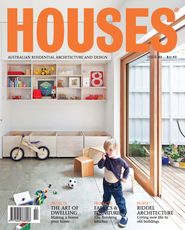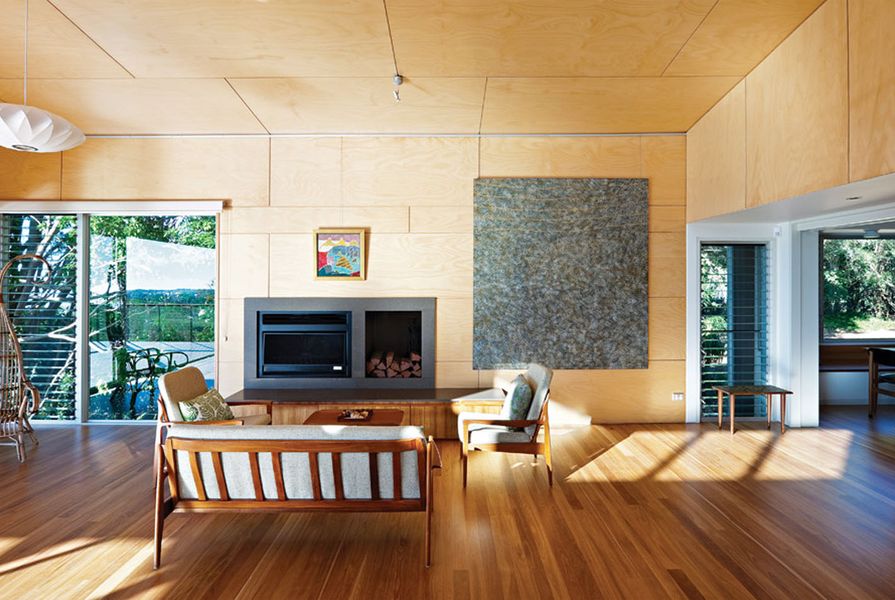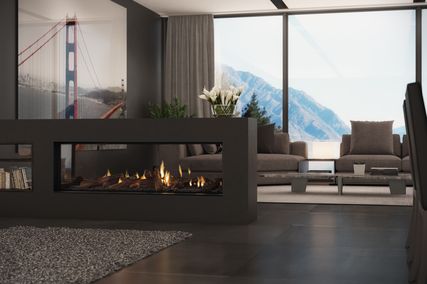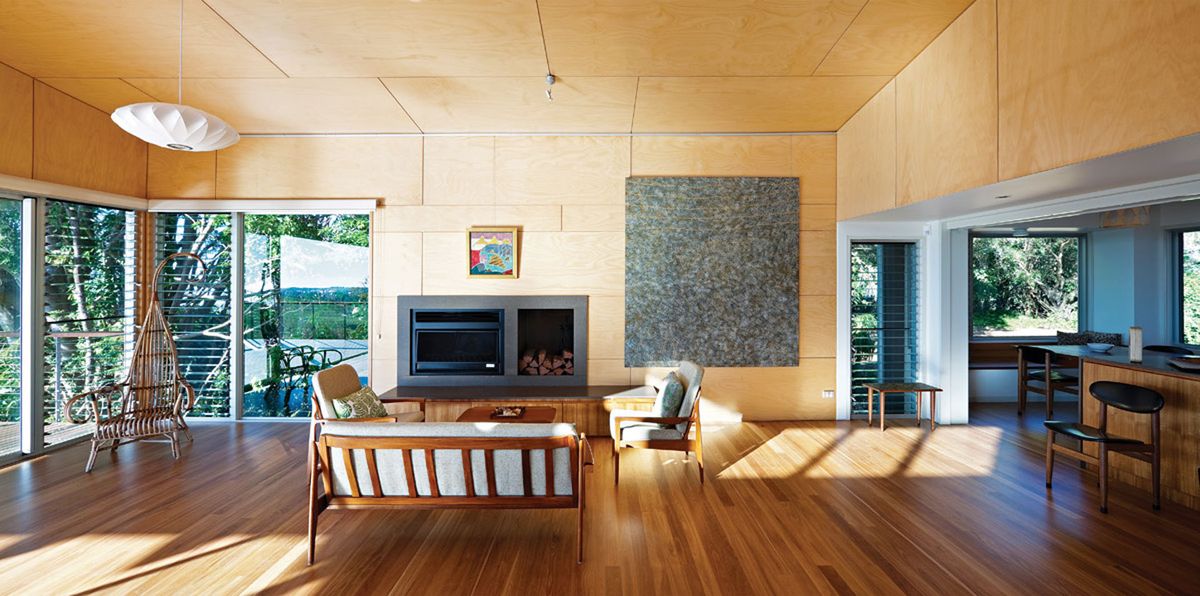Hoop pine plywood.
Image: Christopher Frederick Jones
Hoop pine plywood
The honey-gold appearance and knot-free quality of this hoop pine plywood, seen here in Maleny House, appeal to the practice.
ringwoodandply.com.au
sharpplywood.com.au

Image: Christopher Frederick Jones
Cool-lite GC sheeting
This product, seen here in Cois Fharraige, is often used on external cladding as it provides a weatherproof skin.
Louvretec louvres.
Image: Christopher Frederick Jones
Louvretec louvres
These louvres allow for operable walls that can be closed flush or fully opened to let in light and views, as seen here at Kinauld.
Resene ‘Bite Me’ paint
This dramatic yellow is a signature colour for Riddel Architecture.
Portland cement render
The practice likes to use this “honest” material for low-maintenance, natural-looking finishes, as seen here in Cois Fharraige.
Copper sheeting.
Image: Christopher Frederick Jones
Copper sheeting
This material, seen here on Aquila House, ages beautifully.
Read a profile on Riddel Architecture here.
Source

Discussion
Published online: 8 Jun 2012
Words:
AAU Products
Images:
Christopher Frederick Jones,
Supplied
Issue
Houses, April 2012
























